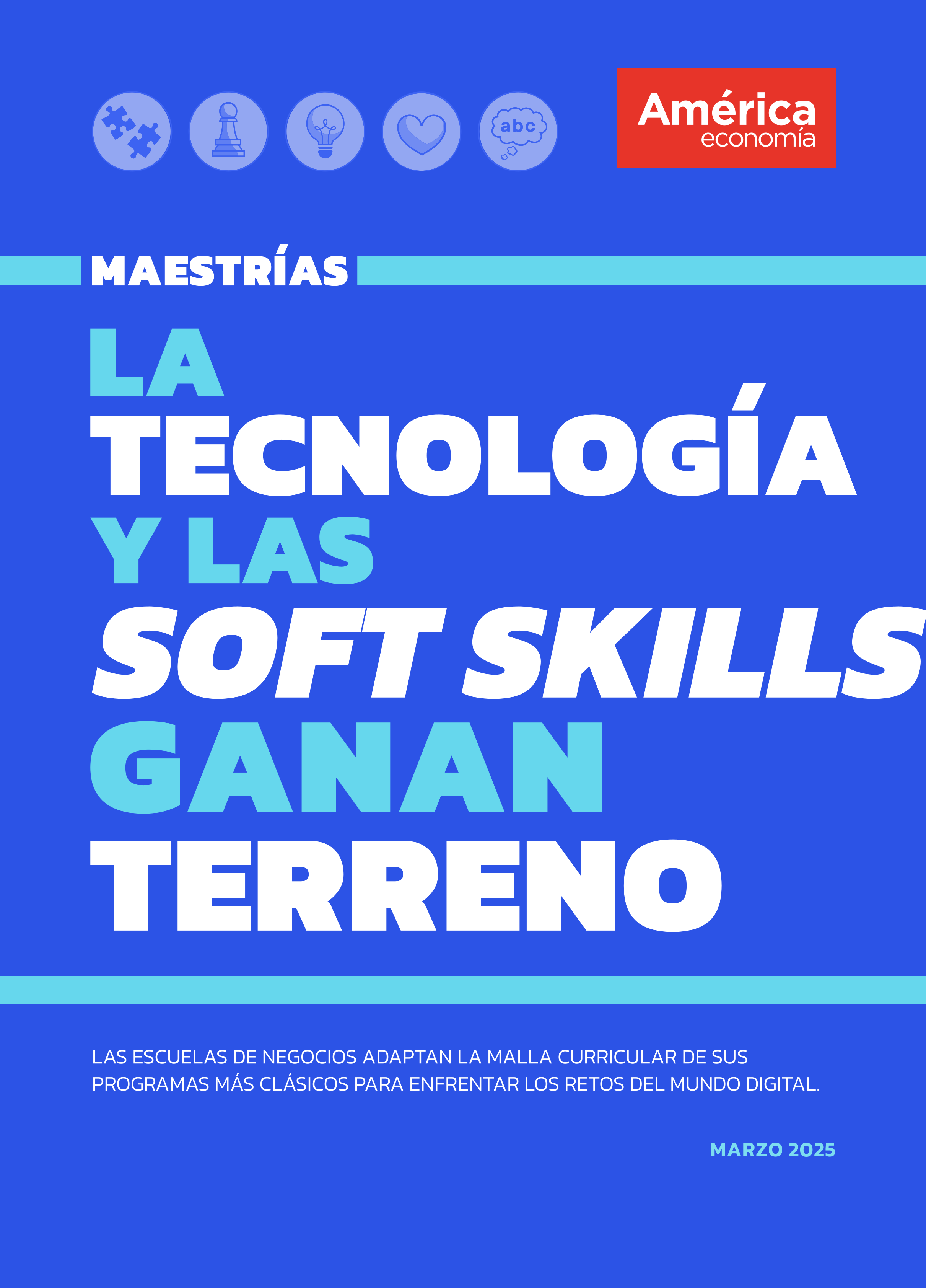Even though recent events, such as the election of Trump or Brexit, threaten the global trends of internationalisation and multiculturalism, the world of business schools tell a different story. Data shows that the number of Latin Americans taking global MBA programs is increasing day by day.
The international context is defined by an especially volatile political and cultural climate, accentuated by a politically divided USA, a disruptive presidential figure such as Donald Trump and by the British decision to abandon Europe. But while all of this is a setback for the arguments in favour of globalisation and multiculturalism which defined the most recent decades, on an educational level, the trend differs.
This is the case at least for Latin Americans, as there is no evidence that the trend has changed the number of Latin Americans that are looking for a postgraduate program outside of Latin America. The numbers have, in fact, increased (according to Information by World Education News and Reviews of 2015, and the Institute of International Education of 2016).
Although Latin American students as a share of total foreign students are still marginal (6% according to World Education News and Reviews), the expected trend is that this figure will continue to grow in the years to come. Young people are aiming to social mobility through formal education, while public policies in countries such as Brazil, Chile Colombia and Mexico are increasing the investment in post graduate education abroad for its professionals.
The growing demand for global postgraduate education generates a constant pressure on the programs themselves to redefine their offers, or discovering new potential niches. Besides, business schools are also responding to or anticipating changes in the business landscape.
All these changes became apparent when analyzing what are offering the best global MBA for Latin Americans from the 49 prestigious schools that qualified this year in our ranking. Together, they have 1,369 Latin American students enrolled in their last cohorts at Full Time MBAs
This year, the ranking has considered five dimensions of analysis: multicultural experience, network power, selectivity, international positioning and focus on innovation. This last one is a new dimension that seeks to evaluate how are business schools training their students as professionals with skills and knowledge that prepare them to innovate, an area considered key by companies and headhunters in Latin America.
The focus on innovation may have multiple expressions, which makes comparisons amongst business schools difficult. Even the very idea of innovation is different from school to school. Some schools consider it a central part of its courses contents, explicitly, while for others innovation is the implicit guideline of the whole discipline. Furthermore, other schools consider that it must be translated into concrete applications such as digital ventures or entrepreneurship.
However, we find that it is possible to observe and measure the extent that some schools guarantee institutional support to innovation, make it part of its programs, develop funds, laboratories, and other different initiatives. A number of serious and sustained efforts were found and measured.
Ranking 2017
The Top 10 in the ranking remains relatively stable this year, although the Spanish IESE gets the first place, moving Harvard to the second, while Haas (Berkeley) gets the third position. IESE's move to the top is due to having a greater number of Latin American students and professors, and to the many networking initiatives that are being carried out by the institution. Two other Europeans institutions, the London Business School (LBS) and HEC Paris, conquer the fourth and fifth place in the Ranking.
The next five in the Top 10 are IE, ESADE, Yale, Tuck and Warwick. Of these schools, Tuck and Warwick are new in this ranking’s select group. What is the secret of these 10 business schools? Although they have different approaches and emphasis, they have some elements in common: high levels of selectivity, and a high position in international rankings. They enjoy and mobilize reputational capital, while guaranteeing transformative educational experiences.
This is due to a rigorous academic offer and a vision of the role of the executive in global societies, but also by a high degree of internationalization in the classroom itself, by having teachers and students of different nationalities, or by promoting fieldwork experiences working in remote countries. The MBA programs with a higher percentage of foreign students in their last cohort are: IMD, Grenoble, ESMT, ESADE, Hult, EDHEC, HHL Leipzig, EAE and Bath.
Multiculturalism á la carte:
In this ranking we considered as quantitative indicators of multiculturalism the number of different nationalities present in a cohort, as well as gender parity in the cohort. We added a qualitative one: multicultural program. We analyzed the opportunities the students are offered to go through experiences of internationalization. We found that the majority of schools are looking for a kind of postgraduate student interested in having significant multicultural life experiences. Schools understand that there is an increasingly smaller gap between life experiences and professional training.
Accordingly, many schools of the ranking have made important bets towards their internationalization, through programs that nudge their students to leave the campus and go to other countries, and generating networks and trajectories marked by the students' own decisions. International experiences are produced through different means, such as internships, exchanges, tours, double degree programs, rotation of venues, and so.
However, some prestigious schools do otherwise: they bring internationalization to their own campuses. Two different ways of producing multiculturalism.
This ranking measures both ways: the internationalization of students and teachers, as well as the initiatives that involve mobilizing the students abroad. It rewards those schools that do both kind of activities, as ESIC, IESE, ESADE, Mc Combs and Hult.
On the other hand, Chapman (Florida), Bath and ESIC show the best gender parity figures, having all between 1 and 0.9 in the female/male ratio, with the group average being 0.54 , i.e., close to one woman per every two men.
In terms of cultural diversity, the following B-Schools stand out by having the biggest number of nationalities in their last MBA cohort: IE (77), Hult (74), LBS (70), Harvard (68) and IESE (64). On the other end of this list there are some schools which have only between 3 and 9 nationalities represented in the classroom.
In the network power dimension, we identified those schools making the greatest efforts to provide and produce networks for Latin Americans, improving the professional outlook of students once they graduate. Some schools take the lead in this, positioning their students in consulting, generating job fairs with Latin American companies, or organizing academic trips to the region; among them are IESE, IE, Tuck, ESIC, Fuqua, Mc Combs, Hult, EAE, Haas and University of Miami.
Network power is also measured by evaluating the career trajectory of ten selected Latin American alumni graduating from an MBA less than 5 years ago. In this regard the highest score is achieved by Fuqua, followed closely by IESE, Mc Combs, HEC Paris, IE, Bath, Warwick, Cass, Mannheim, and Tepper. The fact that there are a fair number of schools in the highest scores is excellent news, since it shows that studying a global MBA generates employability for Latin Americans.
The selectivity and international positioning dimensions allow us to see two sides of the same coin: the brand. We take into account the relationship between the number of students accepted and the number who finally enrolled, known as yield, which shows the behavior of applicants in their final choice of program. The better ratio is shown by Grenoble, Schulich and Harvard. They are followed by ESIC, HEC Montreal, Warwick, EDHEC, Marriot, Mannheim and Chapman.
Methodology:
1. MULTICULTURAL EXPERIENCE AND DIVERSITY (22.5%)
- % of foreign students enrolled in the first year (0.25)
- Number of nationalities (0.2)
- % of foreign academics teaching in the program (0.2)
- Ratio Female: Male (0,10)
- Score in Multicultural Program Scale (0.25):
2. NETWORK POTENTIAL FOR LATIN AMERICANS (12.5%):
- % of Latin American academics teaching in the program (0.15).
- % Latin American students in relation to foreign students (0.15)
- Career path of graduated Latin Americans Score (0,35)
- Score in Scale of Activities that promote networks with Latin America (0.35)
3. SELECTIVITY (27.5%)
- GMAT (0.6)
- Relationship between students accepted and enrolled (0.4)
4. EMPHASIS ON INNOVATION (10%)
- Institutionalization of Innovation (0.4)
- Innovation practices (0.4)
- Curricular flexibility (0.2)
5. INTERNATIONAL POSITIONING (27,5%)
- Positioning reached in The Economist, Financial Times and QS rankings.














